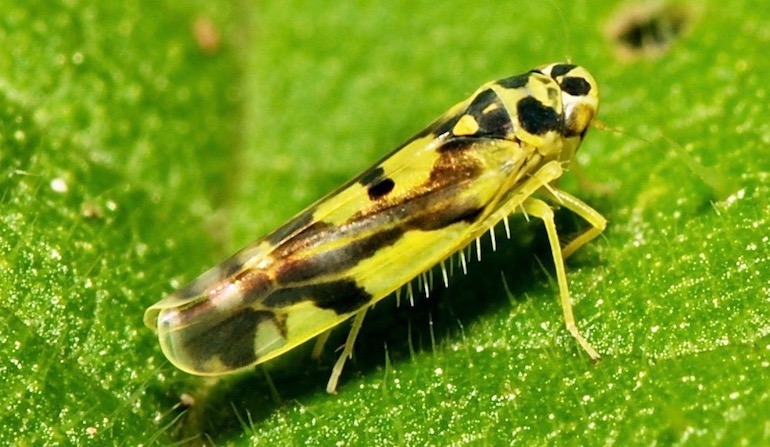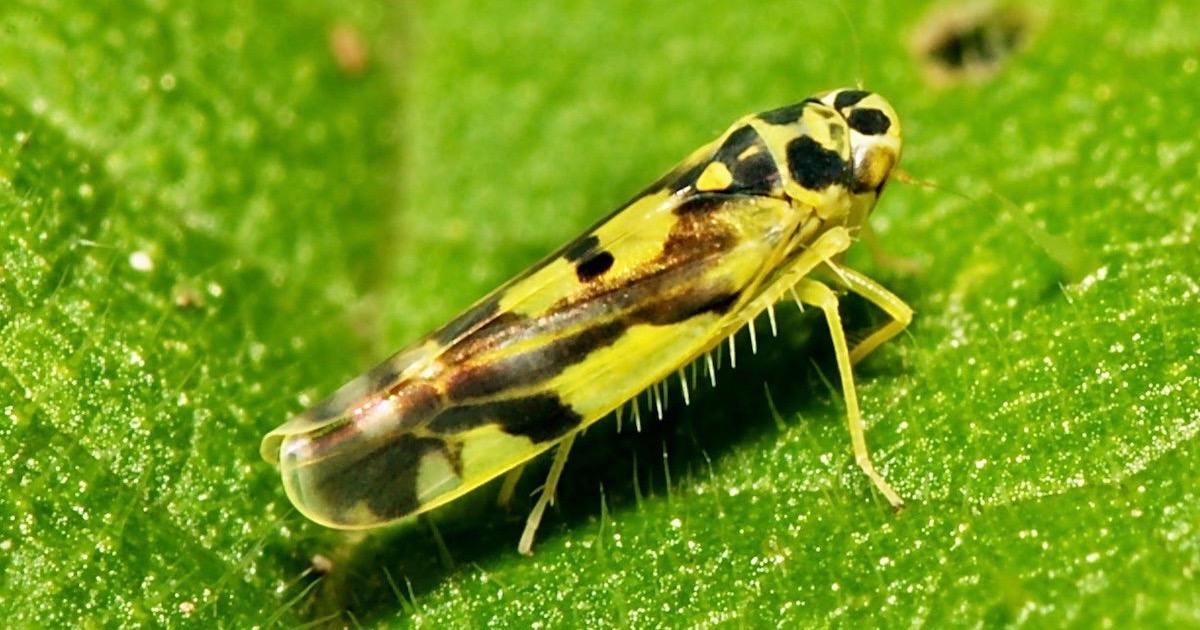 Evolution
Evolution
 Intelligent Design
Intelligent Design
A Problem for Evolution Grows Worse: Brochosome Proteins Encoded By Orphan Genes


A few years ago two philosophers of biology, Discovery Institute’s Paul Nelson and Joel Velasco of Texas Tech, debated on the topic of design and evolution. Nelson masterfully demonstrated design in nature. For his part Velasco also provided an excellent defense of evolution. But the Epicurean claim that the world arose via random chance is not easy to defend, and Velasco’s task was necessarily challenging.
Consider, for example, the orphan genes that Nelson explained are a good example of taxonomically restricted designs. Such designs make no sense in light of evolution, and though Velasco responded with many rebuttals, none were very convincing. Since that debate the orphan problem has grown worse, as highlighted by a new study of brochosomes.
Background
The term orphan refers to a DNA open reading frame, or ORF, without any known similar sequence in other species or lineages. Hence ORFan, or “orphan.” Since orphans are unique to a particular species or lineage, they contradict common ancestry’s much celebrated nested hierarchy model.
The Nelson-Valasco Debate
Velasco addressed the orphan problem with several arguments. First, he reassured the audience that there isn’t much to be concerned with here because “Every other puzzle we’ve ever encountered in the last 150 years has made us even more certain of a fact that we already knew, that we’re all related.”
Second, Velasco argued that the whole orphan problem is contrived, as it is nothing more than a semantic misunderstanding — a confusion of terms. These are nothing more than open reading frames without significant similarity to any known sequence.
Third, Velasco argued that many of the orphans are so categorized merely because the search for similar sequence is done only in “very distantly related” species.
Furthermore, and fourth, Velasco argued that orphans are really nothing more than a gap in our knowledge. For the more we know about a species, the more the orphan problem goes away. And which species do we know the most about? Ourselves of course. And we have no orphans: “Well what about humans, we know a lot about humans. How many orphan genes are in humans? What do you think? Zero.”
In fact, and fifth, Velasco argued that while new orphans are discovered with each new genome that is decoded, the trend is slowing and is suggestive that in the long run relatives for these orphans will be found: “In fact if you trend the absolute number going up, as opposed to the percentage of orphan genes in organisms, that number is going down.”
So to summarize Velasco’s position, the orphan problem will be solved so don’t worry about it, but actually orphans are not a problem at all but rather a semantic misunderstanding, but on the other hand the orphan problem is a consequence of incomplete genomic data, but actually on the other hand the problem is a consequence of insufficient knowledge about the species, and in any case even though the number of known orphans keeps on rising, they will eventually go away because the orphans as a percentage of the overall genomic data (which has been exploding exponentially) are going down.
This string of evolution arguments reminds one of the classic dog-owner’s defense: He’s not my dog, he didn’t bite you, and you hit the dog first anyway. Not surprisingly, each of Velasco’s arguments fails, as I explained here.
In fact, there are many orphans, and while function can be difficult to identify, it has been found for many orphans. As science writer Helen Pilcher explained:
In corals, jellyfish and polyps, orphan genes guide the development of explosive stinging cells, sophisticated structures that launch toxin-filled capsules to stun prey. In the freshwater polyp Hydra, orphans guide the development of feeding tentacles around the organism’s mouth. And the polar cod’s orphan antifreeze gene enables it to survive life in the icy Arctic.
This review notes:
Comparative genome analyses indicate that every taxonomic group so far studied contains 10–20% of genes that lack recognizable homologs in other species. Do such ‘orphan’ or ‘taxonomically-restricted’ genes comprise spurious, non-functional ORFs, or does their presence reflect important evolutionary processes? Recent studies in basal metazoans such as Nematostella, Acropora and Hydra have shed light on the function of these genes, and now indicate that they are involved in important species-specific adaptive processes.
And this is yet another failed prediction of evolution, as this paper explains:
The frequency of de novo creation of proteins has been debated. Early it was assumed that de novo creation should be extremely rare and that the vast majority of all protein coding genes were created in early history of life. However, the early genomics era lead to the insight that protein coding genes do appear to be lineage-specific. Today, with thousands of completely sequenced genomes, this impression remains.
Why then was Velasco so confident and almost nonchalant in his argumentation? Why was he so assured that, one way or another, the orphan problem was not a problem? And why did he believe there are zero orphans in humans, and so it is merely a matter of studying biology, and the orphans will go away?
Lander Orphan Study
It could be due to a significant 2007 study from Eric Lander’s group which rejected most of the large number (several thousands) of orphans that had been tentatively identified in the human genome. The study confidently concluded that “the vast majority” of the orphans were “spurious”:
The analysis here addresses an important challenge in genomics — determining whether an ORF truly encodes a protein. We show that the vast majority of ORFs without cross-species counterparts [i.e., orphans] are simply random occurrences. The exceptions appear to represent a sufficiently small fraction that the best course is would be [sic] consider such ORFs as noncoding in the absence of direct experimental evidence.
The authors went on to propose that “it is time to undertake a thorough revision of the human gene catalogs by applying this principle to filter the entries.”
That peer-reviewed paper, in a leading journal, was well received (e.g., Larry Moran called it an “excellent study”) and it certainly appeared to be authoritative. So it is not surprising that Velasco would be confident about orphans. To all appearances, they really were no problem for evolution.
There was just one problem. This was all wrong.
There was no scientific evidence that those human sequences, identified as orphans, were “spurious.” The methods used in the Lander study were full of evolutionary assumptions. The results entirely hinged on evolution. Although the paper did not explicitly state this, without the assumption of evolution no such conclusions could have been made.
This is what philosophers refer to as theory-ladenness. Although the paper authoritatively concluded that the vast majority of the orphans in the human genome were spurious, this was not an empirical observation or inference, as it might seem to some readers. Their data (and proposed revisions to human gene catalogs), methods, and conclusions were all laden, at their foundation, with the theory of evolution.
So Velasco’s argument was circular. To defend evolution he claimed there were zero orphans in the human genome, but that “fact” was a consequence of assuming evolution is true in the first place. If the assumption of evolution is dropped, then there is no evidence for that conclusion.
Brochosomes
As noted, since the Nelson-Velasco debate the orphan problem has just gotten worse. Consider, for example, brochosomes which are intricate, symmetric, secretory granules forming super-oily coatings on the integuments of leafhoppers. Brochosomes develop in glandular segments of the leafhopper’s Malpighian tubules.
The main component of brochosomes, as shown in a recent paper, is proteins. And these constituent proteins, as well as brochosome-associated proteins, are mostly encoded by orphan genes.
As the paper explains, most of these proteins “appear to be restricted to the superfamily Membracoidea, adding to the growing list of cases where taxonomically restricted genes, also called orphans, encode important taxon-specific traits.”
And how did all these orphan genes arise so rapidly? The paper hypothesizes, “It is possible that secreta exported from the organism may evolve especially rapidly because they are not strongly constrained by interactions with other traits.”
That evolutionists can so easily reach for just-so stories, such as this, is yet another illustration of how false predictions have no consequence for evolutionary theory. Ever since Darwin evolutionists have proclaimed how important it is that the species fall into the common descent pattern. This has especially been celebrated at the molecular level.
But of course the species fall into no such pattern, and when obvious counterexamples present themselves, such as the brochosome proteins, evolutionists do not miss a step.
There is no empirical content to this theory. Predictions hailed as great successes and confirmations of the truth of evolution suddenly mean nothing and have no consequence when the falsification becomes unavoidable.
Photo: A leafhopper (Eupteryx aurata), by Sarefo [GFDL or CC BY-SA 4.0-3.0-2.5-2.0-1.0], from Wikimedia Commons.
Cross-posted at Darwin’s God.
